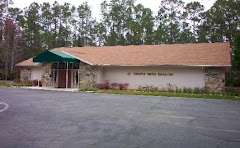

Wine is an essential ingredient to the celebration of Passover, based upon the promises made to the ancient Hebrews in the sixth chapter of the biblical Book of Exodus. The centrality of the use of wine at Passover is verified by the Gospel accounts of the ritual used by Jesus at the Last Supper.
Temple Beth Shalom has made available in Flagler County, wines from the vineyards of the Galilee or Northern Israel region. This region is most suited for viniculture in Israel due to its high elevation, cool breezes, marked day and night temperature changes and rich, well-drained soils (most suitable for Cabernet Sauvignon, Merlot, Sauvignon Blanc and Chardonnay).
Wine has been produced in the Land of Israel since Biblical times. The ancient land of Israel (known at various times as Canaan and Judea) was making wine over two thousand years before Europe. In Biblical times the wine industry was the mainstay of the economy and wine had significant ritual importance.
The city of Gibeon was the center of wine making in ancient Israel. In 1959 and 1960 archaeological expeditions discovered ancient wine cellars saved and preserved at temperatures of 20 degrees Celsius. Furthermore it has been determined that wine was made and stored in ancient Gibeon between 600 C.E and 700 C.E. Great similarities between the wine cellars of Gibeon, Israel and Champagne, France have been noted, as if the same architect was involved in the design and building of the wine cellars despite the fact that the cellars of Gibeon were built 500 years earlier than the cellars of Champagne, France.
Ancient wines lacked the quality that people have become accustomed to in modern times. They were thick and sweet and had to be seasoned just to make them palatable.
Baron Edmond de Rothschild built two wineries in the final decades of the nineteenth century, one in Zikhron Ya'aqov and another in Rishon LeZion. Because of high temperatures the wine of the first vintages went sour, so deep underground cellars were constructed at enormous cost.
In 1906 Rothschild passed the management of the wineries onto the growers who formed the Societe Co-operative Vigneronne des Grandes Caves and in 1957 his son, James Rothschild, donated the wineries to the wine growers cooperative. Their vineyards covered many parts of Israel, but the main concentration was in the coastal regions of Sharon & Samson. The resulting wines were sold under the brand name 'Carmel'.
At the turn of the twentieth century Carmel produced the first Israeli wine to win a medal at a wine show (Carmel No. 1 1900 was a gold medal winner at the Paris World's Fair). It signaled It signaled the rebirth of the Israeli wine industry after 2,000 years.
Well into the 1960s, Israel suffered from a reputation of producing wines too thick and sweet to appeal to true wine connoisseurs. In the 1970s Carmel began to produce Israel's first varietal wines (Cabernet Sauvignon & Sauvignon Blanc).
Today, some Israeli wines are so good that they are compared favorably to the wines of the respected chateaux of France. Starting in the 1990s and continuing in the 2000s there has been an explosion of new boutique wineries throughout Israel. The most famous of these is Domaine du Castel, situated in the Judean Hills, west of Jerusalem. Castel wines were chosen as Decanter Wine of the Month on no less than three occasions.
Israel wins most prizes for its red wines, in particular Cabernet Sauvignon, but awards have been won for traditional method sparkling wines, white wines & dessert wines too. Eleven different Israeli wineries have won gold medals at the very highest level of international blind tasting wine competitions at least once, and some are regular winners.
Temple Beth Shalom is proud to present fine Israeli wines to the sophisticated consumers of Flagler County and to support the produce of the Holy Land. Robert Arkin, President of the synagogue’s Men’s Club is quick to point out that “great festivals like Passover, require great wine from a great and holy land, an ancient land made new again in our own time through the modern State of Israel!”

































